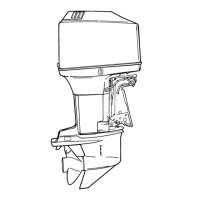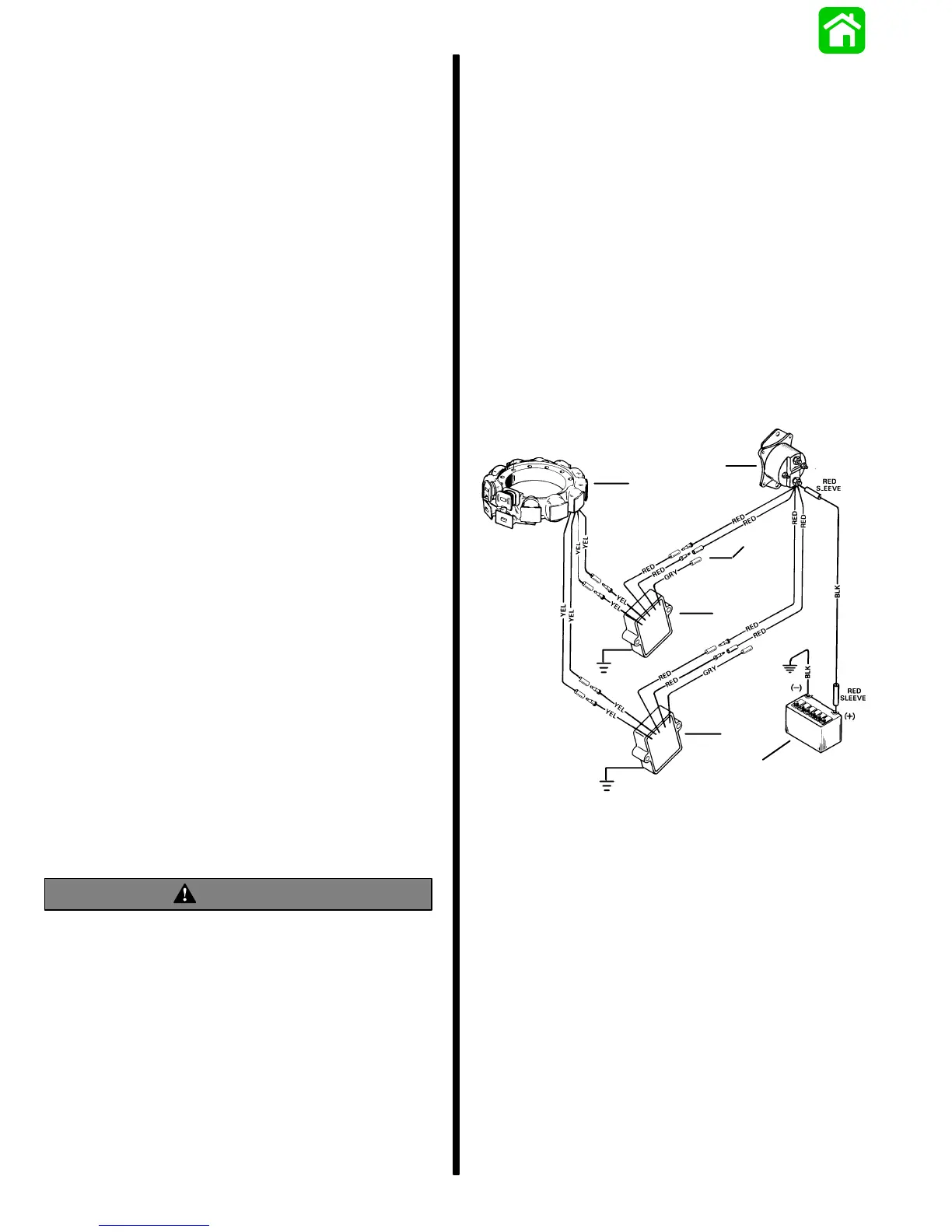2B-4 - ELECTRICAL 90-824052R3 JUNE 2002
Winter Storage of Batteries
Battery companies are not responsible for battery
damage either in winter storage or in dealer stock if
the following instructions are not observed:
1. Remove battery from its installation as soon as
possible and remove all grease, sulfate and dirt
from top surface by running water over top of bat-
tery. Be sure, however, that vent caps are tight
beforehand, and blow off all excess water thor-
oughly with compressed air. Check water level,
making sure that plates are covered.
2. When adding distilled water to battery, be ex-
tremely careful not to fill more than 3/16 in.
(4.8mm) above perforated baffles inside battery.
Battery solution or electrolyte expands from heat
caused by charging. Overfilling battery will cause
electrolyte to overflow (if filled beyond 3/16 in.
above baffles).
3. Grease terminal bolts well with 2-4-C Marine
Lubricant and store battery in a COOL-DRY
place. Remove battery from storage every 30-45
days, check water level and put on charge for 5
or 6 hours at 6 amperes. DO NOT FAST
CHARGE.
4. If specific gravity drops below 1.240, check bat-
tery for reason and recharge. When gravity
reaches 1.260, discontinue charging. To check
specific gravity, use a hydrometer, which can be
purchased locally.
5. Repeat preceding charging procedure every
30-45 days, as long as battery is in storage, for
best possible maintenance during inactive
periods to ensure a good serviceable battery in
spring. When ready to place battery back in
service, remove excess grease from terminals (a
small amount is desirable on terminals at all
times), recharge again as necessary and reinstall
battery.
WARNING
Hydrogen and oxygen gases are produced
during normal battery operation or charging.
Sparks or flame can cause this mixture to ignite
and explode, if they are brought near the vent
openings. Sulfuric acid in battery can cause
serious burns, if spilled on skin or in eyes. Flush
or wash away immediately with clear water.
Battery Charging System
Description
The battery charging system components are the
flywheel permanent magnets, stator, voltage
regulator/rectifier and battery. The rotating
permanent magnets induce an alternating current
(AC) in the stator coils. The AC current is rectified to
direct current (DC) by the voltage regulator/rectifier.
The DC output from the voltage regulator/rectifier is
used to charge the battery. The voltage
regulator/rectifier also senses the battery voltage as
a measure of the battery’s state of charge and
thereby regulates the DC current flow to the battery.
In this manner, the battery charge is maintained and
the battery is protected from an overcharge
condition.
a
b
c
d
d
e
51806
a - 40 Ampere Stator
b - Starter Solenoid
c - To Tachometer
d - Voltage Regulator
e - 12 Volt Battery

